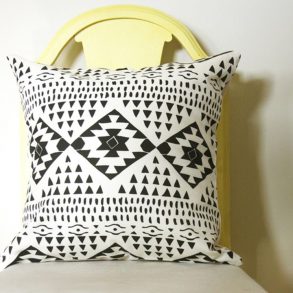After pouring your heart into creating amazing artwork month after month, year after year, you might find yourself wondering how to profit from it, or at least break even? Perhaps you’re already selling your work through galleries and in traditional ways, but you’ve always dreamed of seeing your work on products, and you don’t want the hassle of producing the products yourself. If this sounds like you, art licensing may just be what you are looking for.
Art Licensing is like renting your art, allowing companies to use your images on products while you retain ownership. It’s a fantastic source of passive income, but like every revenue stream, it also has challenges.
Understanding Art Licensing
While art licensing can be complicated, a simple explanation is that art licensing grants a business the right to use your art on their products. You keep the copyright, and they pay you for its use.
This payment, detailed in the licensing contract, can be an upfront flat fee or be paid out through royalties, a percentage of a sale of the product your artwork is adorning.
Benefits of Art Licensing
Many licensing contracts allow you to license your art to other companies and be paid multiple times for one piece. In addition, long-term licenses generate ongoing royalty payments, so you can potentially earn revenue from one piece of art for years.
Licensing also builds your brand. Your name can be associated with your art, increasing recognition and opportunities. This allows you to grow your network and social media following, contributing to more sales of your licensed work and your original pieces.
Drawbacks of Artwork Licensing
We discussed all the benefits of art licensing, so now let’s be realistic and discuss the risks and challenges. Much like every business opportunity, there’s no financial success guarantee.
Licensed merchandise only earns royalties if it sells well, affecting your royalty rate or contract terms. These numbers may not match your upfront hopes. So, if a licensed product doesn’t sell due to challenges that you have no control over, this could mean that you earn little to no income from the license.
A flat fee may make more sense if you are working with a new company or want to avoid the risk of royalty payments. Royalty rates are often better for trusted, long-term partnerships. And flat fee licenses are better for products that only stay on the market for a short period, such as apparel. Home decor products often sell for years on end, making them more conducive to licensing royalties.
Navigating the Artwork Licensing Process
Starting with artwork licensing can feel overwhelming, and speaking with a legal or licensing expert is critical, as is understanding pricing. But a strategic approach simplifies things.
Protecting Your Work
If you know you will license your artwork and widely share it on social media, consider copyrighting it. Copyright establishes legal ownership, protecting you in disputes. For artists, earning money and licensing art responsibly starts with this step, but if you plan on working with a licensing agent, you can wait and see if they have a recommended best practice that they would like you to follow.
Showcasing Your Art
Another critical step is to create a style guide or lookbook showcasing pieces from your portfolio. Think themes: seasonal motifs, trending styles, or specific color palettes. Lookbooks are an important tool for artists who want to connect with buyers and communicate their vision for their art licensing portfolio. Lookbooks are just one communication tool available to us. Our websites, social media accounts, and products are other communication tools we have to use.
Share your work at licensing fairs such as Surtex, Printsource or BluePrint. These events help artists showcase work and potentially license existing artwork to established partners.
Many artists start licensing artwork through print-on-demand (POD) platforms like Society6, Spoonflower and Minted.
Pricing Your Artwork Licensing
How do you price your art licenses? Artists commonly use two methods.
- Flat Fee: Receive a set amount per license, regardless of sales. This provides predictable income, but you miss out on potential extra revenue from unexpected success.
- Royalties: Receive a percentage of each sale. This offers ongoing income tied to product performance, but earnings can be unpredictable. You might work with a licensing agent or company to discuss and define royalty rates.
Contracts define pricing, locations (local or international), and other terms. Negotiating these licensing deals involves factors such as target demographics and building brand recognition. Remember that contracts should be legally sound to help protect you, which can help make creating artwork more viable as a way to earn money and sell products.
Finding Licensing Support
Art licensing agents can be incredibly helpful for working with companies and marketing your work to new clients.
I also recommend The Graphic Artists Guild Handbook of Pricing & Ethical Guidelines. Only one chapter is devoted to Surface Design, but the information is invaluable and a great place to start. Sample art licensing contracts and templates are included in the book.
Conclusion
Art licensing offers artists and businesses exciting opportunities. It’s a creative path to share your art without losing control. If you want to learn more about art licensing explore our Business Development blog posts our join our Textile Design Lab community.
Table Of Contents:
- Understanding Art Licensing
- Navigating the Artwork Licensing Process
- Pricing Your Artwork Licensing
- Conclusion













